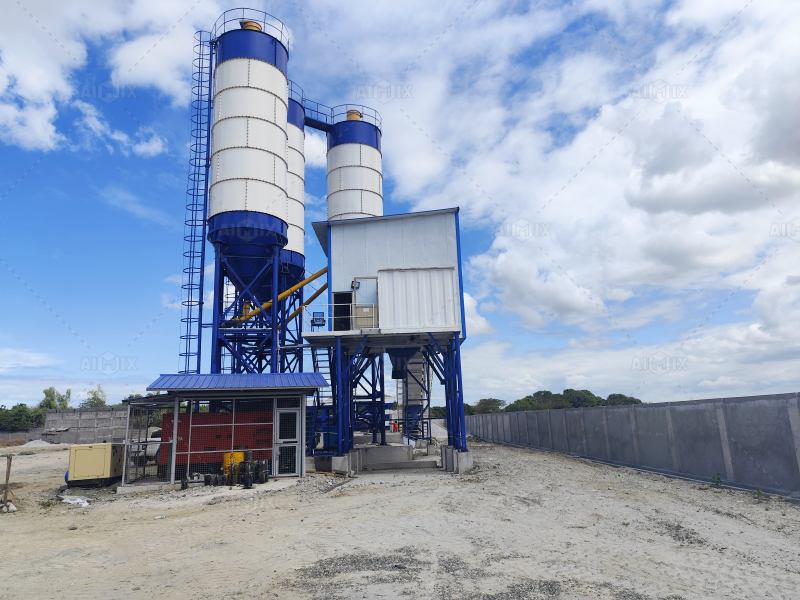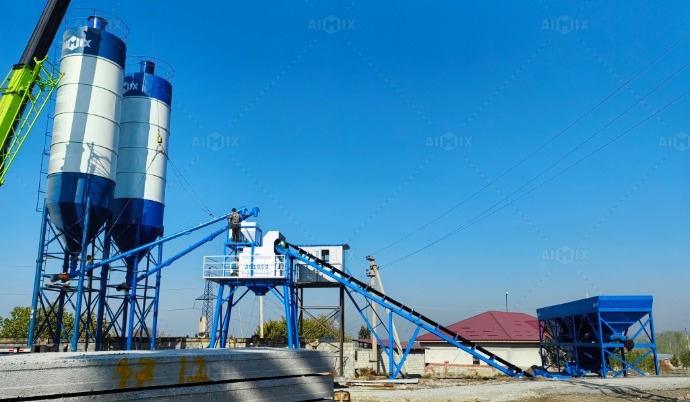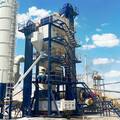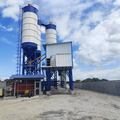Concrete is the backbone of modern construction, used in everything from residential foundations to towering skyscrapers and massive infrastructure projects. Behind every successful concrete structure lies a well-orchestrated process—and at the heart of it is the concrete plant. But what exactly is a concrete plant, and why is it such a vital asset in today’s construction landscape?
In this article, we’ll explore what a concrete plant is, how it works, the different types available, and why it's essential for delivering quality, consistency, and efficiency on construction projects.

What Is a Concrete Plant?
A concrete plant, also known as a concrete batching plant, is a facility or equipment setup that combines various raw materials—such as water, cement, sand, gravel, and additives—into ready-mix concrete. The plant ensures the concrete is mixed to precise ratios and specifications, enabling consistent quality across batches and projects.
Concrete plants are widely used in civil engineering, infrastructure, real estate development, and industrial construction. Whether for a small housing development or a massive highway project, a concrete plant ensures that the right mix is available at the right time.
Main Components of a Concrete Plant
Understanding how a concrete plant functions requires looking at its key components:
-
Aggregate Bins: Store materials like sand, gravel, and crushed stone.
-
Cement Silo: Holds powdered cement.
-
Water Tank: Supplies water for the mix.
-
Conveyors: Transport aggregates from storage to the mixer.
-
Mixing Unit: Blends all materials thoroughly.
-
Control System: Manages batching accuracy, mixing time, and overall operations. Modern plants often use PLC (Programmable Logic Controller) systems for automation.
-
Discharge System: Outputs the final concrete mix to trucks or molds.
Each component plays a role in maintaining batch accuracy, material consistency, and production speed, all of which are crucial for high-quality concrete.
Types of Concrete Plants
Concrete plants come in several types, each suited to different construction environments and output needs:
1. Stationary Concrete Plant
-
Fixed location
-
High output (50–240 m³/h)
-
Used in large infrastructure and commercial projects
-
Fully automated and highly customizable
2. Mobile Concrete Plant
-
Mounted on wheels or trailers
-
Easy to relocate
-
Moderate output (25–90 m³/h)
-
Ideal for road projects, remote areas, and small-scale construction
3. Compact or Mini Concrete Plant
-
Small footprint and capacity (15–35 m³/h)
-
Great for urban construction and startup concrete businesses
-
Easy to install and transport
4. Dry Mix Plant
-
Mixes dry materials, then loads into trucks where water is added
-
Simple design, lower cost
-
Suitable for longer transport distances
5. Wet Mix Plant
-
Complete mixing in the plant before loading
-
Superior mix quality and uniformity
-
Common in ready-mix applications and critical structures

Why Concrete Plants Are Essential in Construction
Concrete plants serve as a centralized, quality-controlled source of one of the most used materials in the world. Here’s why they’re indispensable:
1. Improved Efficiency
By automating the mixing process, concrete plants significantly reduce manual labor and increase output speed. Time-sensitive projects benefit from the plant’s ability to deliver continuous and timely batches.
2. Mix Precision and Consistency
Concrete plants are calibrated to follow exact recipes for different structural requirements. This minimizes human error and ensures that every batch meets required strength, durability, and setting time.
3. Cost Control
While the initial investment in a plant can be high, batching your own concrete often proves more cost-effective over time than purchasing from a third-party supplier, especially on large or ongoing projects.
4. On-Demand Supply
With an on-site plant, project managers can produce concrete when and where it’s needed, reducing reliance on external deliveries and avoiding delays.
5. Customization and Flexibility
Concrete plants allow for quick adjustment of mix designs, making it easy to switch from a standard slab mix to a high-strength column mix or even specialized mixes like self-compacting concrete or fiber-reinforced concrete.
Market Trends and Technological Innovations
Modern concrete plants are no longer just mechanical mixers. With the rise of Industry 4.0, many batching plants now feature:
-
Smart sensors for real-time quality monitoring
-
Remote control systems
-
Energy-efficient designs to reduce emissions
-
Automated material handling and silo refilling
-
Cloud-based data tracking and maintenance alerts
As sustainability becomes a global priority, concrete plants are also integrating features like recycled water usage, dust suppression systems, and low-emission mixers to align with green building practices.

Conclusion
A concrete plant is more than just a piece of equipment—it’s a critical investment in speed, quality, and consistency for construction projects. Whether you’re building a small residential complex or a major highway, having access to a reliable batching plant can significantly impact your project’s success.
With evolving technologies and market demands, concrete plants are becoming smarter, greener, and more accessible than ever. Understanding their role helps builders, contractors, and developers make informed choices that enhance productivity and project outcomes.


